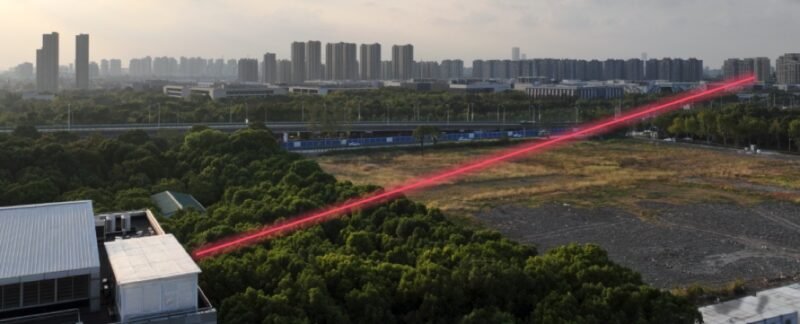Fast Facts
-
Revolutionary Distance: A new device can read text from 1.36 km (0.85 miles) away, surpassing human eyesight capability and significant for distant imaging applications.
-
Novel Imaging Technique: Utilizing intensity interferometry, the device measures light interference rather than direct light, achieving 14 times better resolution (3 mm) compared to traditional setups (42 mm).
-
Wide Applications: This technology can be applied in various fields, including space observations and high-resolution optical imaging, demonstrating its versatility and future potential.
- Quantum Advantage: The technique leverages quantum effects in photon behavior for enhanced resolution, with possibilities for further improvements through advanced laser control and AI integration for better text interpretation.
New Laser Breakthrough Reads Text From a Mile Away
Researchers from the University of Science and Technology of China recently showcased a remarkable advancement in imaging technology. They successfully developed a device capable of reading tiny characters from a distance of 1.36 kilometers, or about 0.85 miles. This technology employs a technique called intensity interferometry, which differs from traditional imaging methods. Instead of directly measuring light waves, it analyzes how light reflects and interferes with itself.
The device operates by emitting eight infrared laser beams that target a distant point. Two telescopes then capture the intensity of the light reflections. This setup allows researchers to reconstruct images by comparing variations in the readings from both telescopes. Their study revealed a resolution enhancement of about 14 times compared to a single telescope’s capabilities.
“In our outdoor experiments, we have successfully imaged millimeter-scale targets located at 1.36 km away,” the researchers stated. They achieved a resolution of 3 mm, while a single telescope would have only provided a 42 mm resolution at the same distance. Such enhancements highlight the potential applications of intensity interferometry.
Long-range cameras like this have varied uses, from space telescopes to remote sensors. They can effectively manage atmospheric turbulence and address imperfections in camera setups. This versatility opens opportunities in fields such as advanced physics experiments and high-resolution imaging.
While initially utilized in space observatories, this technique is now making strides on Earth. Notably, it has identified bright distant stars and other illuminated objects. The researchers emphasize that long-baseline active intensity interferometry can advance optical imaging and sensing.
Moreover, the way photons of light cluster and are interpreted through this technology showcases a quantum effect, adding to its impressive resolution capabilities. The researchers believe further improvements are achievable, including better control of the infrared lasers and the potential integration of AI algorithms for precise text and shape recognition.
“This new work represents a significant technical advancement in imaging distant objects that do not emit their own light,” commented Shaurya Aarav, an optics researcher from Sorbonne University. The implications of this technology could revolutionize not only scientific research but also practical applications in various industries.
Continue Your Tech Journey
Dive deeper into the world of Cryptocurrency and its impact on global finance.
Discover archived knowledge and digital history on the Internet Archive.
QuantumV1

